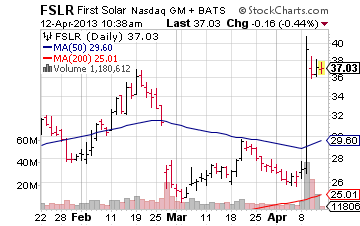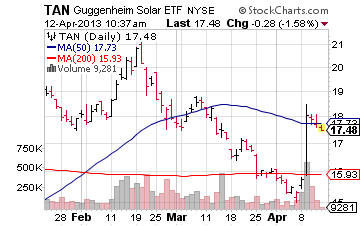Many of the most successful investors are the long-term ones who get to know their holdings very well. If you're invested in a company or are thinking about jumping in, you'd do well to read its annual and quarterly reports closely, and to follow it in the news. But for a deeper understanding of it, poke around its website and peer into its history -- you'll run across lots of interesting things that can enrich what you hope will be a long-term relationship.
Let's look at Corning (NYSE: GLW ) , for example.
Why Corning?
The company is a giant in specialty glasses and fiber optics. Its fortunes are influenced these days by smartphone and tablet makers such as Apple (NASDAQ: AAPL ) , which use its glass in their displays. Corning's Gorilla Glass is so strong that it has put a crimp in the business of screen-protecting companies such as ZAGG (NASDAQ: ZAGG ) . Some worry about Apple's interest in sapphire, though, as it's even stronger than Gorilla Glass (though more expensive) and could threaten Corning.
Corning is also tied to the TV industry, where large-screen models require far more of its glass than relatively tiny smartphone screens. The company does have competition, though, such as from Universal Display (NASDAQ: PANL ) , with its impressive OLED technology that threatens LCD displays' share. Both companies stand to benefit from Samsung's upcoming S4 phone, though, with its bigger and better screens.
What's so interesting?
1. The stock's history of rewarding shareholders has been a bit bumpy. Over the past five years, it has averaged 10% annual losses, but over the past decade, it has averaged a 10% gain. In the past 30 years, it has averaged 7% growth.
2. Its dividend recently yielded a solid 2.7% -- and better yet, the company has been raising that payment by about 19% per year, on average, over the past five years. That kind of growth has a chance of continuing for a while, as Corning's payout ratio is just 27%, meaning that it's only paying out roughly a quarter of its earnings in dividends.
3. The company is old, tracing its roots back to before the Civil War, to an 1851 investment in a glass company.
4. The range of products that Corning has specialized in or currently specializes in is extremely diverse, including railroad lanterns, light bulbs, television tubes, cookware, ceramic substrates, optical fiber, and active-matrix liquid crystal displays. Indeed, long ago, Corning developed a mass-production system for light bulbs that helped make them affordable.
5. Today Corning focuses on five key realms: glass substrates for TV, computer, and other electronic displays; ceramic substrates and filters for emission control systems; optical fiber, cable, and hardware for telecommunication networks; glass and plastic ware for laboratories; and specialty materials for a range of applications and industries.
6. During World War II, Corning boosted morale among employees (and others) by sponsoring a local radio show: the Corning Glass Works Radio Family Party. Corning also sponsored the opening-night concert at Lincoln Center in Manhattan, conducted by Leonard Bernstein, in September 1962. Some 26 million people watched it on TV.
7. Corning introduced Pyrex heat-resistant glass in 1913, and it was a hit not only in homes, but also in labs. In 1954, Jonas Salk grew the polio virus for his vaccine in Pyrex bottles.
8. Corning's clean-air products have helped reduce air pollutants by more than 3 billion tons since 1975.
9. Japan's National Astronomical Observatory contains a telescope mirror 27 feet wide that was made by Corning. It took several years to polish it.
10. Corning was active in the war effort during World War II, with some 174 research and development projects. It developed extra-strong tableware for mess halls and made glass used in various military applications -- and was seen as important enough that the Nazis reportedly planned to bomb the company.
11. Corning's improved production methodology for radio vacuum tubes lowered the average cost of radios from $133 to about $35 between 1929 and 1932, making radios much more affordable for the masses.
12. There are a lot of fascinating facts just about glass. For example: "Corning makes glass tough enough for windows on the space shuttle entering the atmosphere at 25,000 km per hour, clear enough to carry a pulse of light 1000 km, and pristine enough to make an LCD TV with 3 million pixels. Corning glass is anything but simple."
13. The company is known as just "Corning" today, but for more than 100 years, between 1875 and 1989, it was "Corning Glass Works."
There's a lot worth knowing about Corning, for both investors and history buffs.
With the explosive growth of smartphones worldwide, many investors thought they would ride Corning's dominant cover glass to massive investment returns. That hasn't played out yet, as mobile growth has failed to offset declines in the company's core business. In this brand new premium research report on Corning, our analyst walks through the business, as well as the key opportunities and risks facing it today. Click here to claim your copy.
 The Buick Riviera concept car was unveiled in Shanghai on Friday night. Photo credit: General Motors Co.
The Buick Riviera concept car was unveiled in Shanghai on Friday night. Photo credit: General Motors Co.

 David Paul Morris/Bloomberg From sluggish PC sales to Facebook regaining an important advertiser to a department store chain finally dismissing its inept CEO, let's go over the wonders and blunders of business this week.
David Paul Morris/Bloomberg From sluggish PC sales to Facebook regaining an important advertiser to a department store chain finally dismissing its inept CEO, let's go over the wonders and blunders of business this week.





